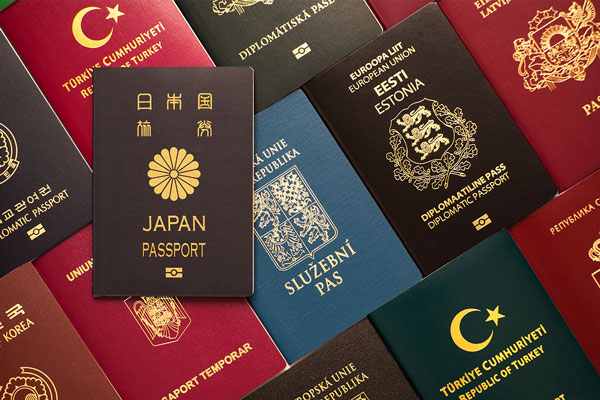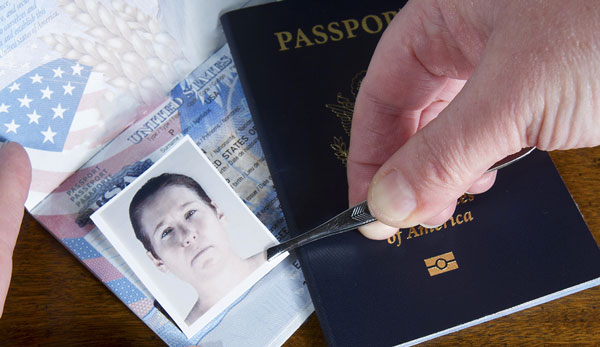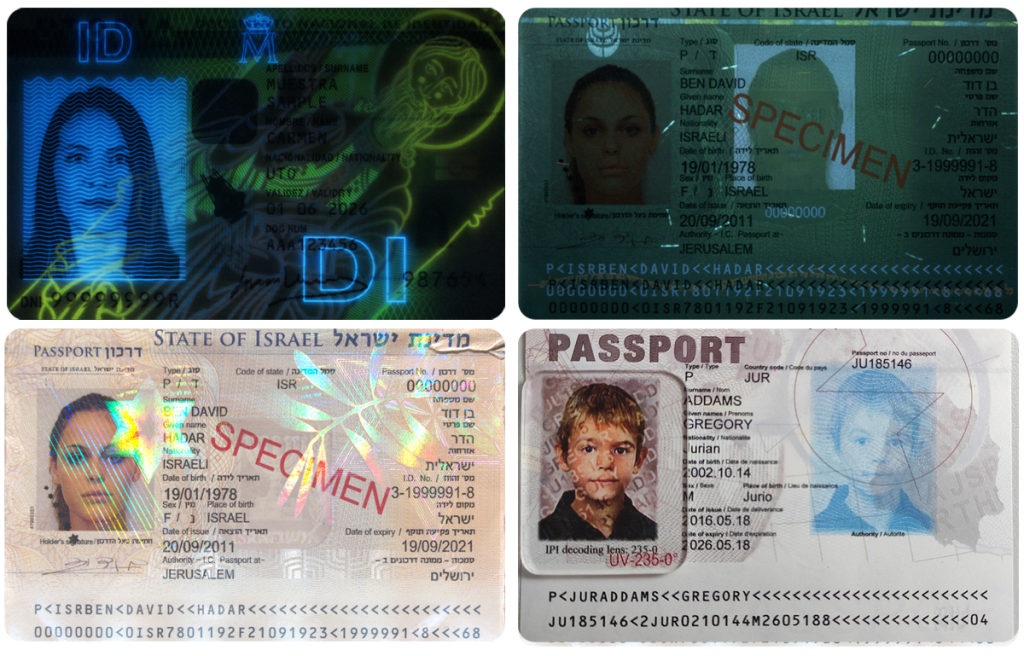People expect to be able to travel anywhere in the world. They want to wave their passports and have state borders open immediately. The more countries they can travel to, the stronger their passports are considered.
However, passport strength can be interpreted in many ways. In politics, it’s measured by the number of countries to document and provide visa-free permission. Security-wise, it means how hard it is to forge them.
In this article, we will argue that security factors are just as, if not more important than geopolitical ones.
Passport Ranking Index: A Traveler’s Dream
Each year, major passport sellers publish their respective indexes listing the most powerful passports in the world. Although the results are often different—as you’ll see—the methodology to determine the best passports in the world usually relies on publicly available data and/or information acquired by governmental bodies. Another similarity between these rankings is that they heavily rely on the overall mobility of citizens, meaning that the more countries they can travel to—preferably without a visa—the stronger their passports are considered.
Henley & Partners’ Passport Ranking
Take Henley & Partners, a London-based global citizenship and residence advisory firm, for example. In its quarterly-updated passport ranking index, the data is provided by the International Air Transport Authority (IATA), which makes it a good choice for ordinary travelers since it shows how much of an impact global events, such as the COVID-19 pandemic had on travel freedom. In that regard, it’s quite interesting that there were only minor shifts regarding the order of the top ten strongest passports. At the time of writing, the world’s best passports, according to Henley & Partners, belong to Japan and Singapore, providing access to 192 countries. For comparison, the total number of countries globally is 195, meaning 98% coverage.

It isn’t surprising that the first 20 places are all held by developed countries with stable governments and political systems. However, there are some interesting results, such as the presence of countries that, despite being relatively small states that aren’t big players in global politics, occupy the 7th and 8th places on Henley’s passport ranking list.
The Henley & Partners index doesn’t forget about the other end of the scale, listing those countries whose passports are considered weak. The bottom ten list is led by states devastated by war and the collapse of internationally-approved governments.
Arton Capital’s Passport Ranking
The Montreal-based global citizenship financial advisory services firm, Arton Capital, developed a rather complex but, overall, precise method to determine the ranking of passports. In its methodology, Arton Capital takes into consideration visa-free, visa-on-arrival, and visa-required accesses to form a total mobility score. However, the main decisive factor is the number of countries where the passport holder must require a visa to enter and the total of the visa-free and visa-on-arrival scores.
This is why in Arton Capital’s annual index issued at the time of writing the United Arab Emirates is considered the strongest regarding passport ranking. While countries in 2nd place like Sweden, Italy, and Finland provide more completely visa-free access than the UAE, their citizens must apply for a visa in 39 states, whereas UAE citizens are required to do that only in 35 countries.
Nomad Capitalist’s Passport Ranking
Although the annual Nomad Passport Index developed by Nomad Capitalist, an industry-leading boutique consulting firm, also emphasizes visa-free travel when determining the rank of passports, it also takes into consideration different factors, such as international taxation laws, global perception, dual citizenship, and personal freedom. This means that the passport ranking of Nomad Capitalist isn’t just intended for travelers but also for global citizens who value global mobility just as much as wealth preservation and personal freedom.
In that regard, the firm found that, at the time of writing, the strongest passport belongs to Luxembourg, while the weakest travel documents are provided by Afghanistan—a country that, coincidentally, ended up being on the bottom of the passport ranking indexes of Nomad Capitalist, Henley, and Arton Capital.
Passport Ranking Index: A Forger’s Dream
The work done by the aforementioned three firms is much appreciated, and it indeed contains valuable information for travelers and departments of state alike. However, a passport shouldn’t be considered strong based on the number of countries it grants permission to enter only. Passport ranking indexes aren’t just observed by ordinary citizens but by people with malicious intent.
The equation here is simple. The higher a country’s travel document in this index, the more prestigious it becomes. This means that the passport will hold a certain level of authority as fewer people will question its authenticity since it originates from a trustworthy state.
This is why forgers also actively pay attention to passport ranking indexes; to know which passports are worth the most, which they can sell for thousands of dollars/euros for various buyers, whether they be illegal immigrants or, as the Guardian has reported, even terrorists.

To make matters worse, the passport ranking index is just a measurement tool for criminals to see which country’s fake passports can make them the richest. If they can get their hands on a fake but convincing passport—often by visiting the dark web—it will open borders for its user since it will most likely get them through security due to their passport passing the passport authentication process.
And we haven’t even mentioned involuntary human negligence, such as security officials accidentally letting a fake passport user slip by at the end of a long and tedious day. After all, making sure that, for instance, the RFID chip, one of the most crucial security features in IDs, works properly in all passports without keeping angry and tired passengers up for more than it’s necessary is virtually impossible—unless you have the device that can take care of this process in an instant and without making mistakes.
What Makes a Passport Truly Strong
As easy as it may seem to say that a passport can be considered strong, the answer isn’t that simple. For ordinary citizens, wealthy investors, and, unfortunately, criminals, the main decisive factor of passport strength is how high a state’s travel document ends up in the passport ranking indexes we talked about. Another way passport strength can be measured is how much a travel document costs—something that is often overlooked despite clearly showing how many citizens can truly enjoy travel freedom in a certain country.
What’s missing from this list, however, is a comprehensive “technical” index that tells security officials which passports are the best when it comes to forgery resistance. Since no such index exists—at least at the time of writing—the easy answer to the question “what makes a strong passport” is that any passport that is hard to forge can be considered strong. However, as with everything in life, measuring the strength of a passport from a security point of view isn’t that simple.
For one, updating passports to disarm forgers is a constant game of cat and mouse. The moment a new security feature is added to a passport—such as the country’s most famous comic book figures in Belgium—criminals do everything in their possession to get the new document and reverse engineer it to start mass production. In other words, local authorities must always be one step ahead, adding newer, more secure elements to our travel documents.
Thankfully, this doesn’t mean that we have to renew our passports every time a new security feature is introduced. Still, it’s more than evident that these additions guarantee unpleasant hours for forgers and, more importantly, a smoother, more secure traveling experience for the people.
To give you an idea of how much the overall security of passports has evolved in the past few years, here are some security features the combination of which can make travel documents forge-resistant:
- Multi-colored UV inks
- Microprints and microfibers placed randomly all over the document or forming a unique pattern/words/sentences
- Letterscreen++® by JURA, which is a patented process where the portrait of the passport’s owner is built up from a personalized micro text arranged in a unique wavy lines-structure
- IPI™, or Invisible Personal Information, contains personal data in the primary portrait and can only be read using a special lenticular lens
- More traditional techniques such as MRZ (machine readable zone) data, special perforations applied on the document’s data page and visa pages, holograms, etc.
- And, of course, having an advanced document reader that isn’t just capable of detecting fake IDs with methods like identifying date formats and comparing that with existing databases but also working in light conditions far from ideal, i.e., in a brightly-lit space.

First row: multicolor UV ink, microfibers.
Second row: various hologram patterns, JURA security features IPI™ and LetterScreen++®.
A Tool to Validate Passport Strength
Having passports that are (virtually) impossible to create counterfeit copies of is only one part of the equation. The battle against forgers was always twofold, consisting of the duo of strong passports and always up-to-date ID document authentication strategies. The best way to achieve the latter is by acquiring a state-of-the-art passport reader and ID authentication solution such as the ones developed and manufactured in-house by Adaptive Recognition.
Our latest and most advanced passport scanner Osmond, is a force to be reckoned with when it comes to busting counterfeit documents. Every security element we enlisted in the previous section—typically featured in the VIZ (visual inspection zone) part of the passport—can be read and duly analyzed with our device. With Osmond, you can find the devil in the details thanks to various lights, including oblique light that can make tactile/embossed elements visible that are usually invisible to the naked eye.

The advanced technology is combined with remarkable user-friendliness in Osmond. All it takes is placing the document to be examined onto the highly resistant scanning surface for the device to extract its data in less than two seconds. It can be compared with relevant databases, whether visible, invisible, or coded into an RFID chip/barcode.
Additionally, Osmond has no problem interpreting documents regardless of language. As such, it can immediately detect typos—typical of lesser-quality forgeries—and can immediately tell users if something seems even a bit off.
In conclusion, Osmond is the ultimate guarantee to deciding what passport can be deemed truly strong. No matter how fast criminals can replicate the security features of that particular country’s passport and where the “issuing” country is on the Henley & Partners index, Osmond cannot be fooled.
Do you have any questions? We’re here to support you every step of the way:

